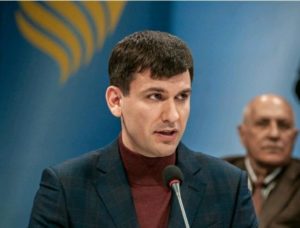
Agribusiness counts on the influence of political authority of newly elected President Volodymyr Zelensky to revitalize the land issue in parliament.
“The land market issue is one of the most exciting. The solution of this issue is largely influenced by the Verkhovna Rada, therefore only political authority can help the guarantor form new rules that have long been in demand by the people,” President of the Ukrainian Grain Association (UGA) Mykola Horbachev told Interfax-Ukraine.
He added that the new president will have to make significant efforts to shift the issue of opening the land market “to a more civilized plane.”
President of the Ukrainian Agribusiness Club (UCAB), CEO of IMC agricultural holding Alex Lissitsa also singled out the land reform as one of the six main areas that requires changes.
In addition, it is necessary to introduce new labor legislation, conduct education and innovation reform, tax liberalization to remove the economy from the shadow, privatization of state-owned property and state-owned companies, as well as partial privatization of Ukrzaliznytsia by allowing private operators to work, Lissitsa said.
The founder of T.B.Fruit group, Taras Barschovsky, agreed with him. He also hopes to speed up the process of opening the land market with the election of Zelensky as head of state.
At the same time, he noted the need for the development of small agricultural enterprises in horticulture and berry-growing, since “only this can save the Ukrainian village.”

Sunrise Logistic LLC, part of Wexler Group, has launched the sale of road bitumen made in Belarus. The group hopes that monthly sales in the near term will be from 10,000 tonnes to 12,000 tonnes, the press service of Wexler has reported.
“The strategic goal is at least 20% of the market. Currently, long-term contracts are signed with Belarusian manufacturers, but the group is already working on supplies from Poland and the Russian Federation” the press service said.
The company also plans to enter the fuel oil market. In particular, Wexler is currently in the process of signing import contracts.
“At any time, as soon as generating facilities have a need to purchase fuel oil, we will immediately provide it. If there is a need for an urgent delivery of batches of fuel oil, we are ready to consider, among other things, the option of sea deliveries,” Sunrise Logistics Director General Oleh Yaskivets said.
As part of the development of the segment of heavy oil products, an own fleet of bitumen carriers has been created.
“Our goal is to reach the final consumer. In the future, as part of this task, we are thinking about our own production of road mixes,” Yaskivets said.
With the growth of the bitumen market, Wexler Group is exploring the possibility of starting a business of its own oil refining. This task is considered a priority for 2019.
Wexler Group is one of the largest suppliers of light petroleum products in Ukraine.

Thirty-nine non-governmental organizations are going to take a legal action to declare unlawful a constituent assembly held on Monday, April 22, to form the public council under Ukraine’s Social Policy Ministry.
Head of NGO All-Ukrainian Platform of Donbass, head of the public council under the Ministry of Temporary Occupied Territories and Internally Displaced Persons of Ukraine Hennadiy Borisichev announced this in a comment to Interfax-Ukraine.
According to him, the initiative group on the formation of the public council under the Social Policy Ministry has “committed gross violations of the law, and the meeting itself [on the formation of the public council] was held behind closed doors.”
“The activity of the initiative group was not transparent, with undisguised abuse of authority. Thirty-nine representatives of NGOs were not allowed to participate in the constituent assembly. This is an anti-record for the entire existence of the institution of public councils in our country,” he said.
According to Borisichev, human rights activists and journalists who arrived at the meeting were also not allowed to take part. Representatives of NGOs had a scuffle with the guards.
Members of anti-corruption NGOs were also not let in for the meeting, he said.
“The NGOs are now preparing documents for the court to recognize the constituent assembly on the formation of the public council under the Ministry of Social Policy as illegal,” he said.
COURT, NON-GOVERNMENTAL ORGANIZATIONS, PUBLIC COUNCIL, SOCIAL POLICY

Inkerman Ukraine LLC plans to increase wine production to 7-8 million bottles per year in 2019 compared to 7 million bottles in 2018, director general of the company Hanna Horkun has said.
According to her, the company intends to open several export markets in 2019, in particular, China, Japan, the Baltic countries, Nigeria, and Poland.
“In the Ukrainian market, we rank third following Villa Krim and Koblevo, and our export share is still scanty. In 2018, we had a goal to stand on our feet in our domestic market. At the same time, we have been exporting goods to Canada for a long time, exported sparkling wine to Switzerland,” the expert said.
She noted that the first shipment to China will be in June 2019.
At the same time, this year Inkerman plans to increase its share in the domestic market by redesigning the classic collection, penetrating the regions and launching the new Prima Maria line.